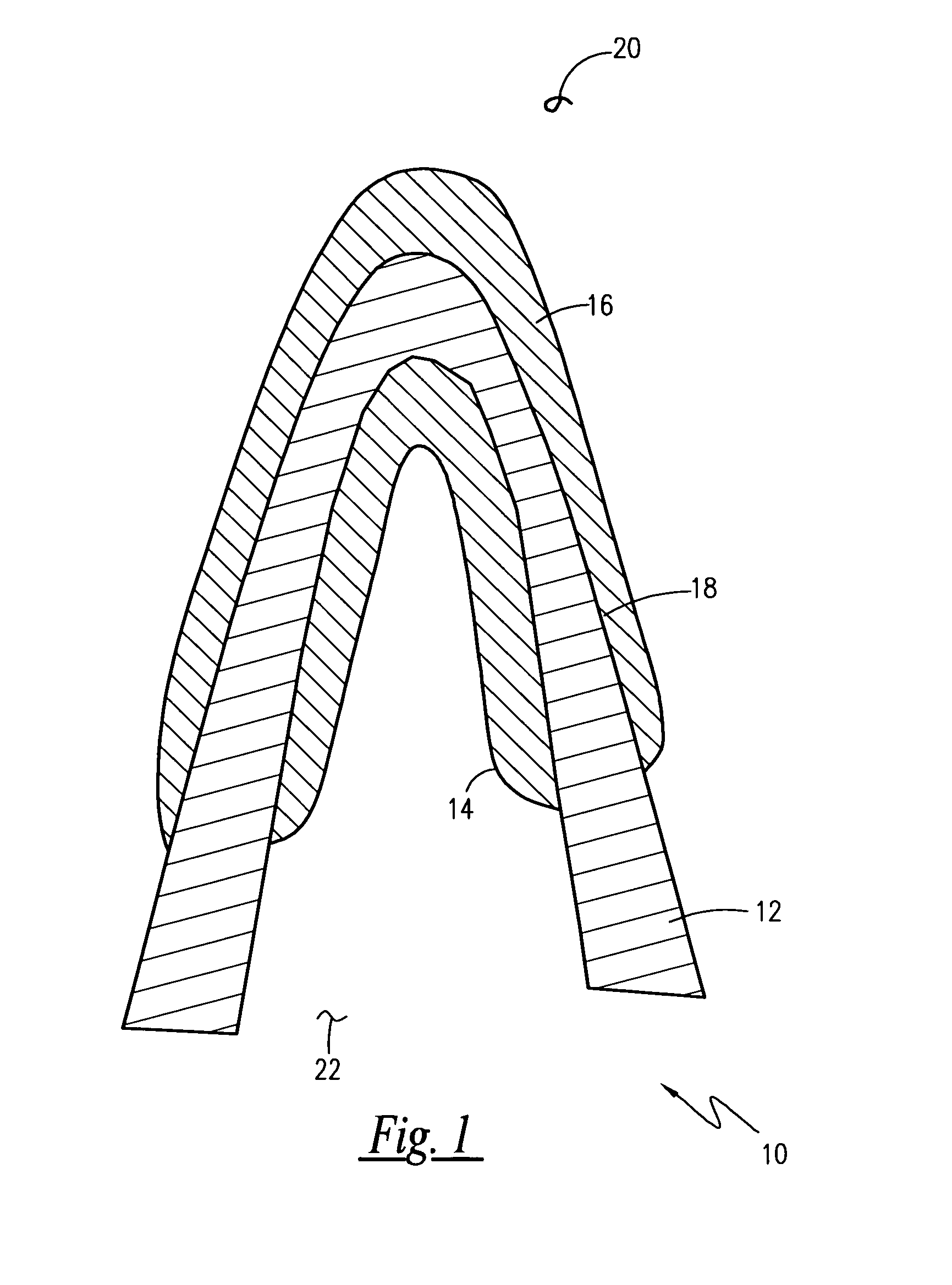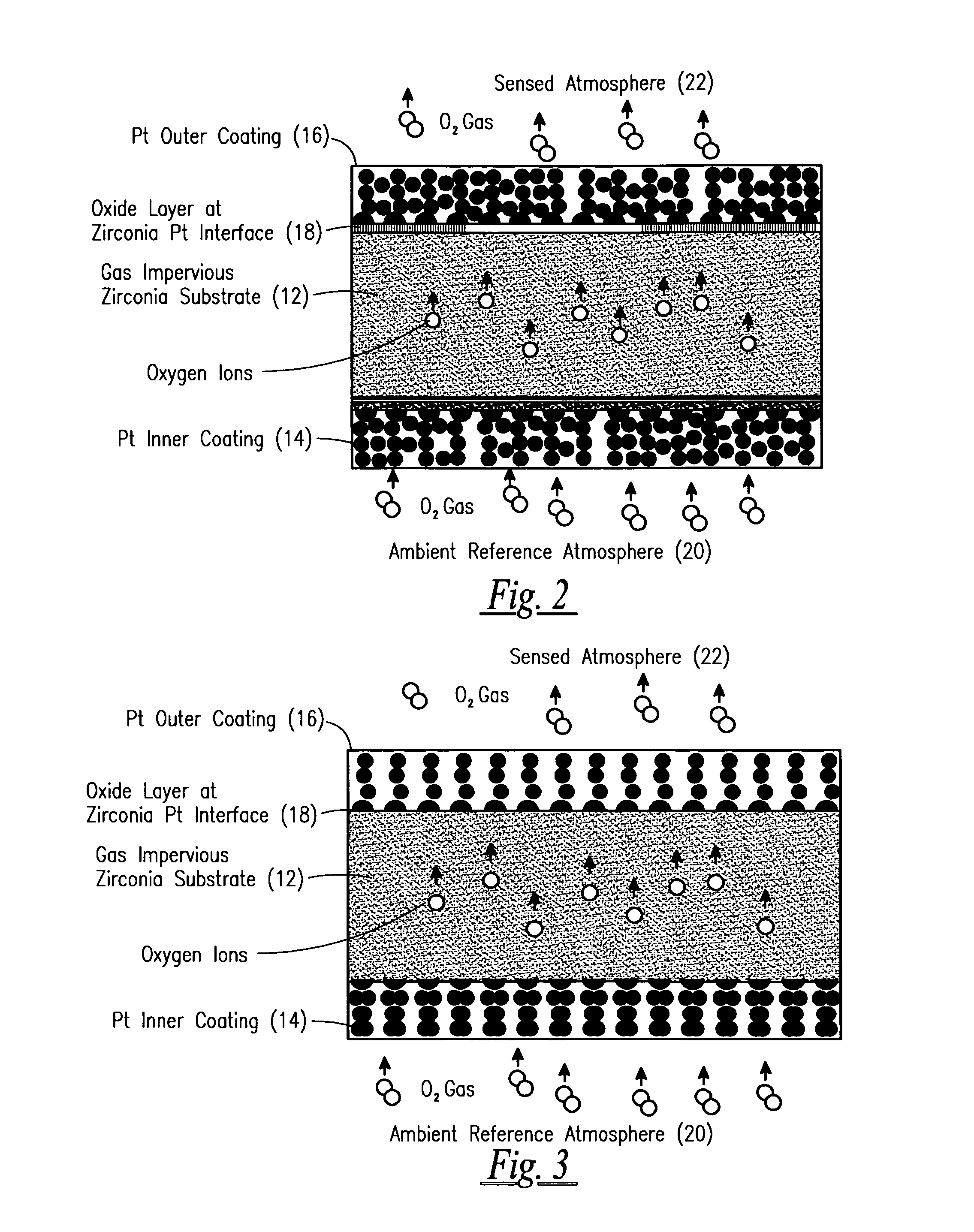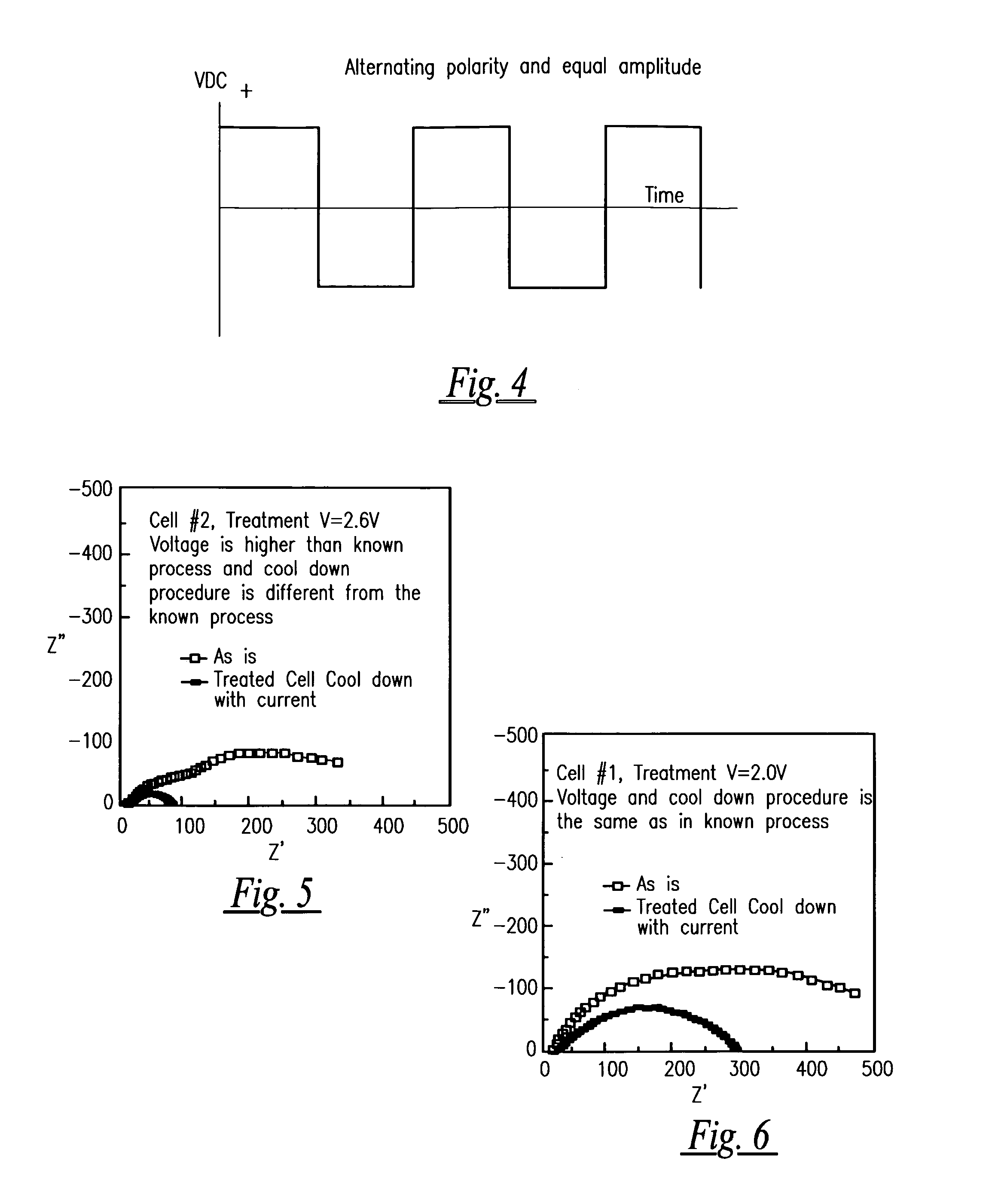Method for improving performance and longevity of solid electrolyte gas sensor
a solid electrolyte gas and sensor technology, applied in the direction of electrochemical variables, separation processes, instruments, etc., can solve the problems of reducing the accuracy or longevity affecting the accuracy of the completed sensor, so as to improve the adhesion of zirconia to pt electrodes, improve the porosity distribution of electrodes, and improve the effect of performan
- Summary
- Abstract
- Description
- Claims
- Application Information
AI Technical Summary
Benefits of technology
Problems solved by technology
Method used
Image
Examples
example 1
1. Example 1
Automotive EGO Sensors
[0036]According to one example of the preferred embodiment of the present invention for use with Automotive EGO Sensors, improved internal resistance stability was shown in a commercially available EGO sensor when it was treated with square wave voltage pulses with the amplitude of 2.6 volts and frequency of 0.2 Hertz. The sensor was heated up to 450 Celsius. At this temperature, square wave pulses were applied between working and reference electrodes. Under these pulses the sensor was heated up to 700° C. at 10 C / min, was held at 700° C. for at least 0.5 H, and cooled down to 450° C. under voltage pulses. Maximum current amplitude was −40 mA / cm2 at 700° C.
[0037]Following the above described voltage / current treatment, the sensor internal resistance was measured with AC Impedance Spectroscopy and its variation was monitored over several days while maintaining the sensing element temperature at 600° C. Variations in the sensor internal resistance was ...
example 2
2. Example 2
Treatment of Oxygen Sensors for Industrial Combustion Applications
[0044]A zirconia tube substrate was coated with platinum by using commercially available platinum inks. Electrodes were fired at ˜1300° C. Following firing, electrodes were treated with a similar treatment as described above for EGO sensors. Voltage pulses with the amplitude V=2.6 V, and frequency=0.2 Hz. Sensor was heated up to 500° C. At this temperature, square wave pulses were applied between working and reference electrodes. Under these pulses the sensor was heated up to 900° C. at ˜10 C / min, was held at 900° C. for at least 0.5 H, and cooled down to 500° C. under voltage pulses. Maximum current amplitude was ˜200 mA / cm2 at 900° C. Following the above described voltage / current treatment, the sensor internal resistance was measured with AC Impedance Spectroscopy and its variation was monitored over several days while maintaining sensing element temperature at ˜600° C. Variations in the sensor internal ...
PUM
| Property | Measurement | Unit |
|---|---|---|
| frequency | aaaaa | aaaaa |
| voltage amplitude | aaaaa | aaaaa |
| voltage | aaaaa | aaaaa |
Abstract
Description
Claims
Application Information
 Login to View More
Login to View More - R&D
- Intellectual Property
- Life Sciences
- Materials
- Tech Scout
- Unparalleled Data Quality
- Higher Quality Content
- 60% Fewer Hallucinations
Browse by: Latest US Patents, China's latest patents, Technical Efficacy Thesaurus, Application Domain, Technology Topic, Popular Technical Reports.
© 2025 PatSnap. All rights reserved.Legal|Privacy policy|Modern Slavery Act Transparency Statement|Sitemap|About US| Contact US: help@patsnap.com



